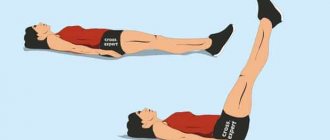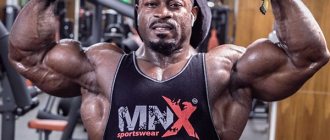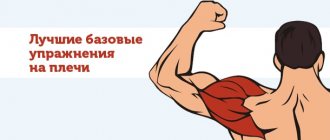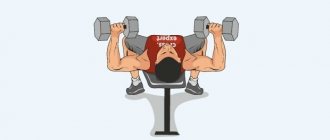Throughout history, many attempts have been made to classify human body types. In the 1940s, Harvard University scientist William Sheldon put together a system based on three separate "components" that he believed could be found in any body.
Sheldon identified three main body types as three possible results of deviation from a certain standard. Each type seems to consist of a certain “substance” that distinguishes it from the other two types. He called these types endomorphic, mesomorphic and ectomorphic, following the endodermal, mesodermal and ectodermal levels of embryonic development. He proposed that these three different components represent the building blocks that make up our body. If one of the components turns out to be dominant, this leads to the deviations that we see in the lower pictures. However, most of us have a mixed body type. These types are easily recognizable in myths and legends. The fat and cheerful innkeeper, the strong warrior and the tall, skinny sorcerer are time-honored archetypes, just like the fat, rosy-cheeked baker's wife, the heroine athlete and the skinny, unfortunate aunt.
The three body types pictured below represent the most distinct variations of male and female figures. Read the description of each type and determine which two suit you the least. Your figure most likely belongs to the remaining third type.
| Endomorphic type | Mesomorphic type | Ectomorphic type |
| Soft roundness of body shapes. Internal organs and digestive functions dominate. Easily accumulates fat deposits in the abdominal area. Endomorphs have the smallest body surface area relative to its mass, resulting in very weak perception external stimuli and the smallest central nervous system, which indicates a general low sensitivity. As a rule, their legs are shorter than their body and their bones are very heavy. Focused on digestion. | Very strong, strong body with thick skin. Muscles, bones and connective tissues dominate. They are usually of average height and broad shoulders. Despite the fact that the ratio of surface area to body mass gives average sensitivity, thick skin and connective tissues provide better endurance in extreme conditions, but the body may not be sensitive at all. Action oriented. | Linearity, fragility and sensitivity of the body. Tall, legs quite long in relation to the body. The central nervous system dominates. The large surface area of the skin relative to body weight provides greatest sensitivity to external stimuli. Ectomorphs have the largest brain and central nervous system, which makes them both sensitive and nervous. Focused on their inner world. |
| Soft body and smooth skin, poorly developed muscles, rounded shapes, overdeveloped digestive system, difficulty losing weight | Muscular body, overdeveloped muscles, rectangular shapes, thick skin, straight posture | Thin, often tall, with a flat chest, sensitive body with poorly developed muscles, youthful appearance, narrow shoulders, relatively large skull |
Body types according to Sheldon
In 1940, Sheldon analyzed the structure of the human body and identified three components, each of which could be measured objectively. He used such measurements on a scale of seven sections. Depending on the predominance of one or another component, these were the following body types:
- Ectomorph (thin and tall).
- Mesomorph (with a predominance of bones and muscles).
- Endomorph (rounded, with excess fat).
The combination of these elements in one body gives its somatotype, which can be expressed by three unambiguous codes.
These somatic components were correlated with three parameters of temperament:
- Cerebrotonia (emotional reserve and cognitive control).
- Somatotonia (aggressive activity).
- Viscerotonia (tendency to communicate, physical relaxation).
In further studies, however, scientists did not find such high correlations, and endomorphy generally seemed to be a rather dubious component. Ros
and
Eysenck
argued that two factors—linearity and size—are sufficient to cover the diversity of empirical observational data.
At the same time, Parnell
confirms the existence of a connection between ectomorphism and schizoid-intellectual temperament. Eysenck's personality theory (1967) establishes two dimensions:
- Introversion-extroversion.
- Neuroticism is stability relative to the constitution of the nervous system.
J. Tanner,
co-author of the book
“Human Biology
”, first published in New York in 1964, classifies constitutional characteristics as morphological, physiological and psychological, which are closely related to each other.
There is clearly balanced sexual polymorphism. The human body, even in appearance, has an infinite number of variations, while one or another classification of body types is based on a limited number of characteristics, without taking others into account. Tanner considers Sheldon's classification to be somewhat reminiscent of Kretschmer's, but points out that there are not discrete "types" but only continuously distributed "components" of body type. “The Kretschmer system is now out of fashion because it was fatally flawed,” writes Tanner.
- Kretschmer believed that people could indeed be classified into clearly demarcated, discrete categories and that only a small number of individuals remained outside of these categories. This premise, widespread until 1930, confused many followers of the system, since every honest researcher had to simply admit that the majority of people do not fall into the already established and apparently extreme cases. Sheldon's system, although reminiscent of Kretschmer's typology, being a triple rather than a double classification, was from the outset based on the now generally accepted assumption that there are not discrete types, but continuously distributed components of the physique." Somatotypes according to Sheldon: endomorph, mesomorph, ectomorph
Sheldon himself, in connection with this problem of discreteness of types, wrote in 1940: “The concept of types has played a positive role in the study of personality, but the types themselves, perhaps, most of all resembled poles supporting a clothesline, in other words, something like , to which it was possible to “hang” the entire classification. As the “rope” filled up, the idea of types receded into the background and finally disappeared completely, giving way to the idea of a continuous distribution. Development proceeded from ideas of dichotomy to the concept of variability along various spatial axes.”
Example of a strength training program for an endomorph
In order to pump up and acquire a beautiful, sculpted body, it is important to follow a diet and be physically active.
With cardio exercises everything is more or less clear. It is advisable to include aerobic exercise in separate workouts and regularly run, walk, climb stairs, ride a bike for at least an hour several times a week Below are general recommendations for strength training that will help make the training process effective, quickly lose weight and get pumped up.
Every workout should include exercises for the abdominal muscles. For each muscle group, you need to select 3-5 exercises and use them as spare ones, choosing what is necessary at each workout, depending on what the lesson is aimed at that day.
Rest between sets should not exceed one minute. For legs and calves, the number of repetitions in exercises should be from 14 to 25 times, and for the upper body - 8-12 times. With each session you need to change the working weight, number of repetitions and rest range between sets. There should be no more than eight approaches for each body part.
The following is an approximate training program for the owner of an endomorph body type. You need to train according to the split system, that is, on each training day, separate muscle groups will be worked out.
First day: chest, triceps, plus abdominal exercises
- Bench press - dumbbells (4 sets of 8 reps)
- Bench chest press - barbell (3 sets of 12 reps)
- Raises of arms on an inclined bench while lying down with dumbbells (3x15)
- Dips (minimum 4 and all the way)
- Close grip bench press - barbell (4x8)
- Standing overhead press - dumbbell (3x15)
- Crunches - press (4x15)
- Hanging leg raises (3x10)
Day two: back and biceps
- Deadlift (4x6)
- Wide grip vertical row (3x12)
- One-arm dumbbell row (4x10)
- Bent-over T-bar row with a narrow parallel grip (3x12)
- Shrugs with dumbbells (5x20)
- Lifting the barbell with a reverse grip - working out the biceps (4x15)
- Hummer with dumbbells (3x15)
Day three: legs and shoulders
- Barbell squats (5x8)
- Narrow leg press (4x15)
- Lunges with a barbell (3x20)
- Deadlift on straight legs. Use dumbbells (4x12) in the exercise
- Calf raises while standing on a platform - calf work (4x20)
- Swing your arms to the sides with dumbbells (3x15)
- Seated dumbbell shoulder press (3x10)
- Wide grip row with barbell (3x15)
This is an average scheme that anyone can train with, but should not be taken as a standard. By listening to your body and consulting with a trainer, the program can be modified and adapted to suit the characteristics of your body.
Somatotyping
In choosing the three components to determine the somatotype, Sheldon proceeded from the practice of observation. He began by obtaining about 4,000 standard nude photographs of college students from the front, side, and back (see photo below). Ignoring the overall size of the body, which his classification ignores, he tried to find extreme body types and identified three such extremes, corresponding to the end of the distribution curve for each component. The individual then received a score for each component. This was done anthroposcopically, using a rating scale from 1 to 7 points, with equal intervals between the numbers (this means that an individual receiving a score of 3 is as different from an individual receiving a score of 2 as the latter is from an individual receiving a score of 1). . Thus, the first of the selected extreme options was evaluated as 7-1-1, the second - as 1-7-1 and the third - as 1-1-7. The components were called endomorphic, mesomorphic and ectomorphic, thereby reflecting the then not very popular theory of their origin from the germ layers. A set of three numbers is a person’s somatotype. The whole system is called somatotyping. It should be emphasized that this term is appropriate to use only in connection with the Sheldon system. It cannot serve as a synonym for any constitutional classifications.
Endomorph, what is it anyway?
In general, we should have considered the main body types in a separate article a long time ago, but for now, I’ll tell you briefly. Many experts divide people into three body types:
- Ectomorph (skinny).
- Mesomorph (athlete)
- Endomorph (fat).
I didn’t want to offend anyone (I’m talking about the inscriptions in brackets). I say this simply for clarity. I talked about all three body types in the article about ectomorphs. Take a look if you wish. Now, I’ll tell you specifically about ENDOmorphs.
They are characterized by:
- slow metabolism;
- gain fat quickly;
- medium or high strength indicators;
- short arms, wide waist and hips;
- large bones and massive limbs;
Most people on the planet have these characteristics. In order to pump up a sufficiently aesthetic body, with a minimal layer of fat, endomorphs require constant control over their diet and a certain kind of physical activity.
In general, if you think that you are an endomorph, then I hasten to dissuade you. There are practically no PURE SOMATOTYPES (body types) in nature!
“Pure” somatotype
Even if you are a thin ectomorph or a fat endomorph, you shouldn’t be upset or happy ahead of time. The man who divided the body types into -ecto, -meso and edomorphs was named William Sheldon. He argued that there are very few pure somatotypes in nature. There are both “fat mesomorphs” and “trash endomorphs”.
And in general, in many ways, your results will depend more on your determination and motivation than on your genetic predisposition.
Body structure of endomorph, mesomorph and ectomorph
To describe the components, let us turn to their extreme manifestations.
The extreme endomorphic variant (7-1-1) is characterized by spherical shapes, to the extent possible for humans. Pronounced endomorphs have a round head, a large belly, weak, flabby arms and legs, with a lot of fat on the shoulders and hips, but thin wrists and ankles. He has a relatively large liver, spleen and, apparently, intestines; the large lungs and heart are somewhat different in shape from the lungs and heart of persons belonging to other extreme body types. Such a person with a large amount of subcutaneous fat could be called simply fat if all the anteroposterior dimensions of his body (including the chest and pelvis) did not prevail over the transverse ones. With prolonged fasting, he becomes, according to Sheldon, simply a starved endomorph, but does not approach the points of either an ectomorph or a mesomorph. Extreme variants of the three components of Sheldon's somatotypes: A. Extreme endomorphy, 6-3-2. B. Extreme mesomorphy, 1 1/2-7-2,
Obesity appears to be more or less concomitant with this constitution, and the accumulation of fat during aging is believed to be directly related to the endomorphic component score. Although diet and exercise can stop this trend, the threat of obesity remains forever, while people with a high ectomorphic component show absolutely no signs of such a trend. It is possible that individuals with a high degree of endomorphy have more fat cells than those with a low endomorphic component, just as people with a high degree of mesomorphy appear to have more muscle cells. However, this is nothing more than a hypothesis, since we do not have quantitative histological data on the number of muscle and fat cells in humans. The extreme version of the mesomorphic component is the classic Hercules with a predominance of bones and muscles. He has a massive cubic head, broad shoulders and chest, muscular arms and legs with a predominance of distal segments over proximal ones. The heart muscle is relatively large. The amount of subcutaneous fat in mesomorphs is minimal, the anteroposterior dimensions are small.
B. Extreme ectomorphy, 1 1/2-2-6 1/2. D. Average body type, 3-4-4.
An extreme example of ectomorphy is a lanky person. He has a thin, elongated face, a receding chin, a high forehead, a thin narrow chest and stomach, a narrow heart, thin, long arms and legs. The subcutaneous fat layer of the ectomorph is almost absent, the muscles are undeveloped, but in relation to the overall size, the surface of the skin is large and the nervous system is well developed. It is quite natural that most people do not belong to the extreme options noted; all three components are moderately expressed in their physique. Thus, the most common somatotypes would be 3-4-4, 4-3-3 or 3-5-2. Sheldon considered the last three to be the most common.
Main characteristics of a mesomorph
A mesomorphic or normosthenic body type has average characteristics; such people quickly gain muscle mass with adequate loads. Mesomorphs have indicators that are closest to the norm.
Basic indicators of a mesomorph
| Options | Characteristic |
| Height | Average |
| Weight | Within normal limits |
| Metabolic rate | Fast |
| Strength and endurance indicators | Medium, grows quickly under load |
| Ratio of limb length to body size | Average |
| Skeletal system | Medium or large |
| Muscular system | Well developed |
| Amount of adipose tissue | Low percentage |
| Nervous system activity | Normal |
The dolichomorphic physique is inferior to the mesomorphic physique in terms of the rate of increase in muscle growth and strength. Fast metabolism allows mesomorph men and women to burn excess fat without much effort.
Nutrition and training
Mesomorphs are wiry men with high endurance and strength, representatives of the most successful genetic form of men for bodybuilding. Guys of average height (according to the human height classification - about 178 cm) with developed muscles achieve the necessary relief and volume with standard training systems, performing basic exercises.
The usual training for such men consists of cycles of exercises to increase strength and mass. There are no special rules or restrictions in nutrition; you should stick to a varied diet with a low fat content.
Criticism of somatotyping
Numerous objections have been raised against the somatotype determination system.
The first of these is that the components are not independent. In the language of multivariate analysis, they are dimensional, not orthogonal. There is a negative correlation between them, so that a high score on one component will to some extent exclude high scores on the other components. Thus, there are somatotypes 2-3-5, 3-3-5 and 4-3-5 and not 1-3-5, 5-3-5, 6-3-5 or 7-3-5. Similarly, somatotypes 6-4-1 and 4-4-4 are known, but 7-7-1, 5-5-5, 3-3-3 or 1-1-1 are not known. The lack of independence is associated with biometric difficulties in interpreting correlations of somatotype with other variables. More serious is the theoretical difficulty: it would seem more natural to think of Sheldon's components as independent, or orthogonal. Orthogonal components are, of course, more convenient. However, if some physiological and genetic mechanisms really underlie the somatotypic components, then the choice between physical or orthogonal components should be based on biological rather than statistical laws. It is quite possible that during embryonic development such variants are actually formed, interconnected by a negative correlation. However, judging by the latest data below on the amount of fat, muscle and bone tissue in different areas of the body, at least these tissues develop in completely independent directions. The independence of such indicators as bone thickness and muscle thickness serves as a serious objection to the concept of mesomorphism in its modern understanding, since the latter involves both wide bones and developed muscles. However, this component is assessed primarily using muscle size, so bone thickness can be omitted from the description almost painlessly. The subjectivity of determining somatotypes is also an object of criticism, although in some respects it is an advantage and not a disadvantage of the system. Sheldon wrote that a researcher can best judge a subject's "morphogenotype" by his somatotype. By definition, the somatotype remains constant throughout life; The appearance and size of the body change, but not the somatotype. Consequently, the measurement criteria used to determine the somatotype would have to change with age. Various diseases or muscle hypertrophy associated with increased physical activity change the contours of the body, but again not the somatotype. Thus, the person involved in determining the somatotype should, if possible, take into account age, the presence or absence of pathological processes and the degree of physical activity. It's not as difficult as it seems. For an experienced eye, it will not be difficult to identify hypertrophy associated with physical activity, and a weight loss of more than 4-5 kg will certainly be revealed by the appearance of wrinkles and folds of skin, clearly visible in photographs. The eye often says more than the measuring instrument. Although theoretically the determination of the somatotype is best done after repeated observations over several years, in practice the body type characteristic of 20-25 years of age with normal nutrition is taken as the basis for the final assessment. Determining the somatotype in children is not very accurate. One can only predict the somatotype by examining a 5-year-old, and perhaps a 3-year-old child, citing a certain degree of inaccuracy due to the relative independence of changes characteristic of adolescence. Determining the somatotype of women is also difficult. Usually the same criteria are applied as when determining the somatotypes of men, and this leads to an excess of endomorphic types among women compared to men and a complete absence of scores of 6 or 7 for the mesomorphic component. Based on these shortcomings, a number of modifications of the Sheldon technique were later proposed. Parnell proposed a system based only on anthropometric measurements, with which one can approximately estimate the somatotype. However, this method turned out to be less effective than the system of standard multiple regression equations between somatotype and body size developed by Damon and his colleagues. Heath and Carter proposed allowing scores above 7 to more directly relate components to traits such as length, weight, fat fold thickness, and bone width. The advantages of these methods are not entirely obvious. Although Sheldon's typology was subjected to serious criticism, it turned out to be convenient for practical use. The analysis of the types of constitution did not contrast those already described, but only supplemented them. Proposed in 1940 and illustrated in an atlas published in 1954, it is very consistent. Regardless of its theoretical basis, it is extremely convenient and informative, which is why it is still popular today.
Training programs for girls
Body types (somatotypes) according to hit chart
Not only men, but also women are ectomorphs. Many people think that this is their huge advantage and they can eat whatever they want and not gain weight. But we have already looked at this issue - any excesses have consequences, including disordered eating. Ectomorph girls need to work on themselves no less than men.
Exercises in the gym
The training program for an ectomorph girl for two days should look something like this:
| Monday (upper body) | ||
| Dumbbell bench press | 4x12 | |
| One-arm dumbbell row | 4x10 | |
| Wide grip lat row | 4x10 | Makatserchyk - stock.adobe.com |
| Hyperextension | 4x12-15 | Makatserchyk - stock.adobe.com |
| Seated delt press in a simulator | 4x12-15 | Makatserchyk - stock.adobe.com |
| Overhead dumbbell extensions | 3x12 | Vitaly Sova — stock.adobe.com |
| Curls with dumbbells while sitting on an incline bench | 3x12 | Makatserchyk - stock.adobe.com |
| Thursday (lower body) | ||
| Squats at Smith | 4x12 | |
| Deadlift on straight legs | 4x10-12 | |
| Lunges with dumbbells | 3x10 | Makatserchyk - stock.adobe.com |
| Leg curls in a lying machine | 3x15 | Makatserchyk - stock.adobe.com |
| Weighted calf raises | 4x15 | |
| Bench crunches | 3x12-15 |
Three-day split option:
| Monday (chest + shoulders + triceps) | ||
| Seated chest press | 4x12 | Makatserchyk - stock.adobe.com |
| Seated dumbbell press | 4x12 | Makatserchyk - stock.adobe.com |
| Wide grip barbell row | 4x12-15 | Makatserchyk - stock.adobe.com |
| Overhead dumbbell extensions | 3x12 | Vitaly Sova — stock.adobe.com |
| Kickback with dumbbells | 3x10-12 | Makatserchyk - stock.adobe.com |
| Bench crunches | 3x12 | |
| Wednesday (back + biceps) | ||
| Barbell row to the waist | 4х12,10,8,6 | Makatserchyk - stock.adobe.com |
| Wide-grip lat pull-down to chest | 4x10-15 | Makatserchyk - stock.adobe.com |
| Horizontal block pull | 3x10 | tankist276 — stock.adobe.com |
| Close-grip lat pull-down | 3x10 | Makatserchyk - stock.adobe.com |
| Standing dumbbell curls | 4x10-12 | |
| Friday (legs + abs) | ||
| Squats at Smith | 4x12 | |
| Leg press in the simulator | 3x12 | |
| Deadlift on straight legs | 4x12 | |
| Lunges in Smith | 3x10 | Alen Ajan - stock.adobe.com |
| Calf raises in the gym | 4x15 | Makatserchyk - stock.adobe.com |
| Reverse crunches on a bench | 3x10-12 |
Despite the fact that the split coincides with the men's program, it is not a classic ectomorph mass training program. Here we introduce some isolation exercises to protect the fragile female joint and ligament system from unwanted injuries. In addition, there is significantly less axial load on the spine, there are no heavy deadlifts and squats with a barbell, as in the program for ectomorph men.
Workout at home
You can train not only in the gym, but also at home. Even a girl can take the first steps to improve her physical fitness at home. All you need is a pair of collapsible dumbbells.
Training program for an ectomorphic woman at home for two days:
| Monday (upper body) | ||
| Wide grip push-ups (if you don’t have the strength, you can do it from your knees) | 4x10-15 | Andrey Bandurenko — stock.adobe.com |
| One-arm dumbbell row | 4x10 | |
| Pullover with dumbbell lying down | 3x10-12 | Nicholas Piccillo - stock.adobe.com |
| Seated dumbbell press | 4x12 | Makatserchyk - stock.adobe.com |
| Dumbbell swings to the sides while standing | 4x12-15 | Makatserchyk - stock.adobe.com |
| Standing dumbbell curls | 3x12 | |
| Overhead dumbbell extensions | 3x12 | Vitaly Sova — stock.adobe.com |
| Thursday (lower body) | ||
| Plie squats with dumbbells | 4x15 | |
| Deadlift on straight legs with dumbbells | 4x12 | |
| Lunges with dumbbells | 4x12 | Makatserchyk - stock.adobe.com |
| Crunches on the floor | 3x12-15 | |
| Elbow plank | 3x40-60 seconds | Makatserchyk - stock.adobe.com |
Split for three days:
| Monday (chest + shoulders + triceps) | ||
| Wide grip push-ups (if you don’t have the strength, you can do it from your knees) | 4x10-15 | Andrey Bandurenko — stock.adobe.com |
| Seated dumbbell press | 4x12 | Makatserchyk - stock.adobe.com |
| Dumbbell row to the chin | 4x12-15 | ruigsantos - stock.adobe.com |
| Overhead dumbbell extensions | 3x12 | Vitaly Sova — stock.adobe.com |
| Kickback | 3x12 | Makatserchyk - stock.adobe.com |
| Wednesday (back + biceps) | ||
| Deadlift with dumbbells | 4x12 | |
| One-arm dumbbell row | 4x10 | |
| Pullover with dumbbell lying down | 4x12 | Nicholas Piccillo - stock.adobe.com |
| Standing dumbbell curls | 4x10-12 | |
| Friday (legs + abs) | ||
| Goblet squats with dumbbells | 4x12 | |
| Deadlift on straight legs with dumbbells | 4x12 | |
| Lunges with dumbbells | 4x10 | Makatserchyk - stock.adobe.com |
| Crunches on the floor | 3x12-15 | |
| Elbow plank | 3x40-60 sec | Makatserchyk - stock.adobe.com |
Author Ivan Tungusov
Project expert. Training experience - 12 years. A good theoretical basis on the training process and proper nutrition, which I am happy to put into practice. Need a recommendation? This is for me










